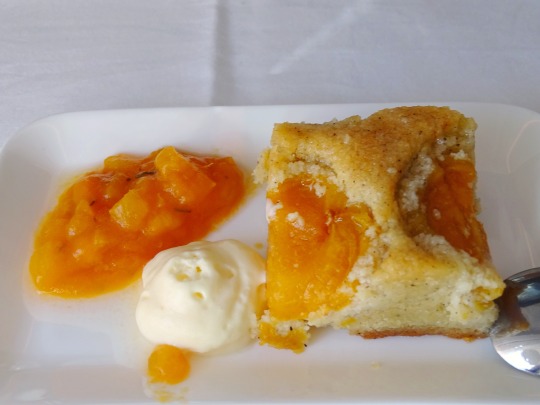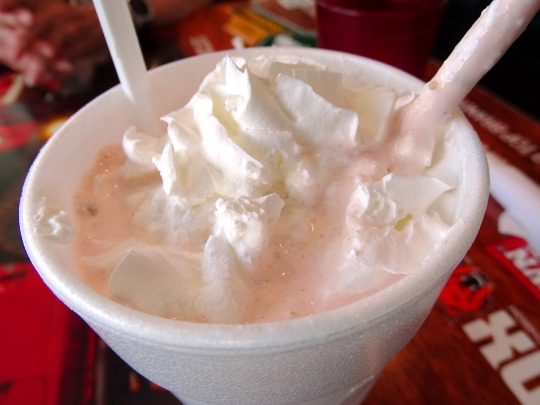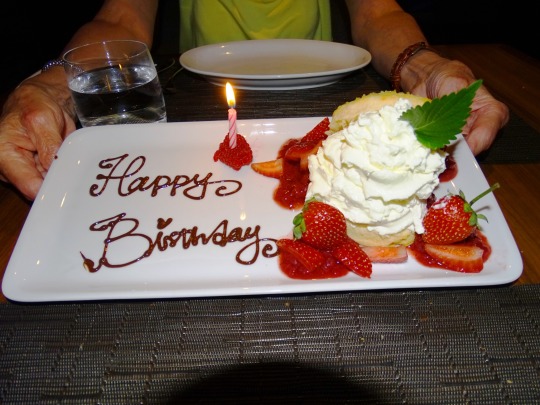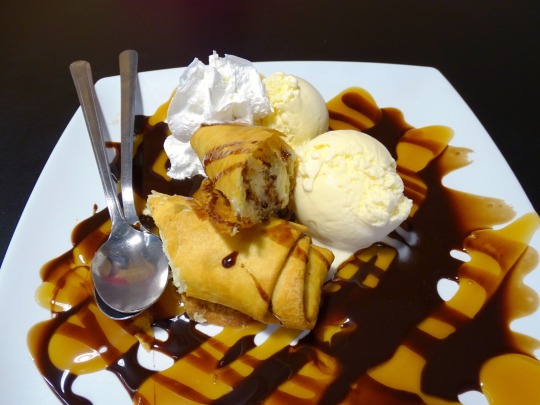#amul butter milk
Explore tagged Tumblr posts
Text
Amul Products: Your Ultimate Guide to Deliciousness
Loved this Amul deep dive? What are your favorite Amul products? Share in the comments below! 👇
From villages to bustling cities, the name “Amul” evokes a sense of both deliciousness and national pride in India. Now, this iconic dairy brand is making waves beyond its home borders. The recent announcement of Amul’s fresh milk products launching in the United States marks a pivotal moment in its history – bringing the “Taste of India” to tables across the globe. Let’s delve into the inspiring…

View On WordPress
#amul#amul butter#amul cheese#amul ice cream#amul milk#amul products#•#dairy products#indian dairy#quality food#taste of india
0 notes
Text
Private Labeling: The Key to Building Your Brand Empire
In the fast-paced and highly competitive modern food industry, establishing a unique and recognizable brand is essential for long-term success. One effective strategy to achieve this is through private labeling. This approach allows businesses to create and sell products under their own brand names by partnering with established manufacturers. For companies in Vadodara, Gujarat, private labeling offers a significant opportunity to build a strong brand presence without the need for extensive manufacturing capabilities.

What is Private Labeling?
Private labeling is a business practice where a company manufactures products that are then branded and sold by another company. This allows businesses to focus on marketing, sales, and brand development while leveraging the manufacturing expertise of third-party producers. For the food industry, this means that businesses can offer a variety of products under their own brand without having to invest in production facilities.
The Food Industry Landscape in Vadodara
Vadodara, a prominent city in Gujarat, boasts a vibrant food industry. The city is home to numerous food processing companies that produce a wide range of products, from snacks and beverages to dairy and packaged foods. These companies provide ample opportunities for private labeling, making Vadodara a hub for food entrepreneurs.
List of Food Industries in Vadodara
1. Balaji Wafers Pvt. Ltd.
Known for its extensive range of potato chips and snack foods.
2. Amul Dairy
A major player in the dairy industry, producing milk, butter, cheese, and other dairy products.
3. Vadilal Industries Ltd.
Specializes in ice creams, frozen foods, and ready-to-eat meals.
4. Haldiram's
Famous for its wide variety of sweets, snacks, and ready-to-eat packaged foods.
These companies are just a few examples of the thriving food processing sector in Vadodara, each offering unique products and capabilities that can be harnessed for private labeling ventures.
Benefits of Private Labeling in Vadodara
Cost-Effectiveness
Private labeling is a cost-effective way to enter the market or expand product lines. By partnering with established manufacturers, businesses can avoid the high costs associated with setting up and maintaining production facilities. This allows for significant savings that can be reinvested into marketing and brand development.
Market Differentiation
In a crowded market, differentiation is key. Private labeling allows businesses to offer unique products under their own brand names, helping them stand out from competitors. This is particularly important in the food industry, where brand loyalty can drive repeat purchases and long-term success.
Flexibility and Innovation
Private labeling provides businesses with the flexibility to experiment with new product lines and quickly respond to changing market trends. Without the constraints of production, companies can innovate and adapt their offerings to meet consumer demands, ensuring they stay relevant in a dynamic market.
Brand Control
When you engage in private labeling, you maintain control over your brand’s image and quality. You can dictate the design, packaging, and marketing strategies, ensuring they align with your brand values and target audience. This control is crucial for building and maintaining a strong brand identity.
Finding the Right Private Label Partner
Choosing the right food product company in Gujarat, especially in Vadodara, is crucial for a successful private labeling venture. Here are some key factors to consider:
Manufacturing Capabilities
Ensure the manufacturer has the necessary infrastructure and expertise to produce your desired products at the required scale. This includes checking their production capacity, technology, and quality assurance processes.
Quality Standards
Quality is paramount in the food industry. Partner with companies that adhere to stringent quality control measures and industry standards. This will help maintain consistency and ensure your products meet consumer expectations.
Flexibility and Customization
Look for manufacturers that offer flexibility in terms of product customization. This includes the ability to adjust recipes, packaging designs, and production quantities to meet your specific needs.
Case Study: Modern Food Products
Modern Food Products, a burgeoning food brand in Vadodara, successfully utilized private labeling to expand its product range and establish a strong market presence. Initially focused on a small selection of snacks, the company partnered with Balaji Wafers Pvt. Ltd. to introduce a new line of gourmet potato chips under the Modern Food Products brand.
By leveraging Balaji Wafers' advanced manufacturing capabilities and expertise in snack production, Modern Food Products was able to quickly bring their new line to market. The private label partnership allowed them to focus on branding and marketing, resulting in a successful product launch that significantly boosted their market share.
Navigating the Food Industry in Gujarat
Gujarat, and Vadodara in particular, offers a fertile ground for private labeling due to its diverse and well-established food processing industry. The state is home to numerous companies specializing in different food segments, providing ample opportunities for businesses looking to enter the market or expand their product lines.
List of Food Processing Companies in Gujarat
1. Gujarat Co-operative Milk Marketing Federation (GCMMF)
The organization behind the renowned Amul brand, offering a wide range of dairy products.
2. Parag Milk Foods Ltd.
A leading dairy product manufacturer known for its Gowardhan and Pride of Cows brands.
3. Adani Wilmar Ltd.
A major player in the edible oil market, producing the popular Fortune brand of cooking oils.
4. Britannia Industries Ltd.
Known for its bakery products, dairy items, and snacks.
These companies represent the diverse and dynamic food processing industry in Gujarat, providing numerous opportunities for private labeling partnerships.
Conclusion
Private labeling is a powerful strategy for building a strong and recognizable brand in the competitive food industry. By partnering with established food processing companies in Vadodara and Gujarat, businesses can leverage manufacturing expertise to offer high-quality products under their own brand names. This approach not only enhances brand visibility and differentiation but also provides the flexibility to innovate and adapt to market trends.
For businesses looking to establish a foothold or expand their presence in the food industry, private labeling in Vadodara offers a cost-effective and efficient pathway to success. By focusing on branding, marketing, and customer engagement, companies can build a robust brand empire that stands out in the crowded marketplace. Whether you are a startup or an established business, private labeling holds the key to unlocking your brand's full potential and achieving long-term growth in the dynamic world of food products.
#List of food industries in Vadodara#Food Product company in Gujarat#Food processing companies in Gujarat#Private labelling in Vadodara#Food company in Vadodara#Food companies in Gujarat#Food product company in India#Food manufacturing companies in Vadodara#Food distributors company in Vadodara#Food exporter company in Vadodara#Food manufacturing companies#Private Labelling services in Vadodara
4 notes
·
View notes
Text






















World Milk Day
Start your day with a glass of calcium-rich milk, visit a local dairy farm, or see what milk alternatives like soy, oat, or almond milk you might enjoy.
It’s a well-known fact that milk is rich with calcium, a mineral that promotes healthy teeth and bones. June 1st is the date that has been set aside to celebrate Milk Day. And, of course, this is a celebration that can take place anywhere in the world, given that milk is a global food!
The use of milk in food and drink has been happening for thousands of years. As most people can appreciate, milk is an integral part of most people’s daily lives, and there’s an entire industry that revolves around it as well.
Milk is a liquid food rich with nutrients like calcium. It’s a food product that is primarily used by mammals during infancy. Although, in the case of humans, people tend to consume it in adulthood, as most adult humans can digest the lactose in milk.
Of course, milk isn’t only available for drinking. It’s an essential ingredient for dairy foods such as butter, cream, ice cream, and cheese. Milk can also be found as an ingredient used in other types of foods, such as bread, cakes, cereal, desserts and so much more.
There is no denying that milk has become a mainstay of most people’s diets today. It’s also one of the cheapest food products to buy, given the industrial scale of milk production in the world. Some of the largest producers of milk are the United States, India, and China.
History of Milk Day
Milk Day became a globally celebrated event on June 1st, 2001. The global celebration, in general, can be traced back to the United Nations (UN). In particular, the FAO (Food and Agriculture Organization) of the UN has been responsible for organizing and marketing World Milk Day throughout the globe.
More than two decades ago, the FAO proposed a global Milk Day to recognize the importance of milk and the role that it plays in our world. In addition, this day was also created to provide direct focus to the milk industry and publicize the various activities connected with it. In fact, the dairy industry supports the livelihoods of approximately 1 billion people throughout the world!
But even before this day was created in 2001, Milk Day was celebrated by some other nations throughout history. In the British Isles, for example, a Milk Day celebration (“Imbolc” – Celtic for “milk”) took place in the pre-Christian era.
Considering the fact that over six billion people worldwide consume milk and dairy, it’s no surprise there was a need to celebrate this healthy, delicious beverage!
How to Celebrate Milk Day
June 1st is a day that many people may want to write their diaries. Milk plays such a significant role in the world that should certainly be celebrated in style!
But what can be done to celebrate such a momentous occasion? Try out some of these ideas for enjoying Milk Day:
Get the Day Started with a Glass of Milk
Why not celebrate today with a glass of fresh, cold milk in the morning to kick-start the day?! But don’t stop there. How about enjoying a big bowl of cereal full of delicious milk?
Of course, after drinking that glass of milk, don’t forget to snap a photo of that beautiful milk mustache! Share it with the world on social media to remind everyone else to enjoy Milk Day too.
Join an Official Milk Day Celebration
As a worldwide event, Milk Day comes with all kinds of official opportunities to celebrate! In 2020, more than 400 Milk Day campaigns took place in over 68 countries all over the globe, so there should be plenty to join in with again this year. Here are some events that have taken place in previous years:
World Milk Day Milk Donation. Happening in New York State, USA, several organizations have gotten together to provide a free gallon of milk to the people in their local community who visit a dairy farm.
Live Recipes by Renowned Chefs from Around the World. This live Facebook event has been hosted by Amul, India, which is the country’s largest dairy brand, with the intention of showing the importance of milk throughout different countries and cultures.
International Dairy Federation Raise a Glass Event. Hosted by the IDF in Brussels, Belgium, this event involved hosting a toast to milk from people all around the world.
Check the World Milk Day website to get access to all the needed information to make plans for this day.
Visit a Local Dairy or Farm
For those who have some extra time, especially those with kids who are ready to learn, consider visiting a local dairy to learn the process of milking cows and collecting the milk. This will also lead to learning about pasteurizing and homogenizing milk, methods used to filter milk and keep it long-lasting.
If there are no cow farms nearby, consider visiting a smaller farm that has goats. It’s still possible to learn about everything milk-oriented but may be more accessible because they might be smaller and locally owned.
Enjoy Other Milk Products
For lunch, why not have a mozzarella or Margherita pizza and drink a glass of chocolate milk to wash it down? After that, those who are still feeling hungry could always have some delicious ice cream for dessert!
Other options for enjoying milk products on this day (and every day!) include yogurt, sour cream, butter, custard, cream and all of the recipes that can be made from them.
Try a Milk Alternative
For folks who have trouble digesting dairy easily, why not try other non-dairy milk alternatives? Here are some popular options:
Soy Milk. A favorite as one of the early milk alternatives, this one is made from soybean plants that grow fairly prolifically in many places.
Almond Milk. Made by crushing almonds and blending them with water, and then straining out the mix to remove any solids that are left, this nutty milk is filled with protein.
Coconut Milk. This one uses the white, fleshy part of the coconut, grating it and soaking it in water. The cream rises and is skimmed off, then what’s left is strained to extract the coconut milk.
Whether with a milk product or a dairy alternative, celebrating World Milk Day can be loads of fun!
Source
#chocolate cake#Rice pudding with cinnamon#flan de huevo#Pudim flan#Crème caramel#chocolate pie#whipped cream#dessert#Spain#travel#original photography#summer 2021#vacation#World Milk Day#1 June#WorldMilkDay#Princess cake#Strawberry Shortbread#USA#Strawberry Milkshake#Chocolate Banana Milkshake#Berries&Cream#Coconut Cream Pie#Banana Cream Pie#Strawberry Cheesecake Milkshake#Pecan Praline Milkshake#food#restaurant#Coconut Cream Pie Cheesecake#Pecan Pie
3 notes
·
View notes
Text
Online supermarket in chennai
https://www.dailyneeds247.com/online-supermarket-in-chennai-2/
Your One-Stop Online Supermarket in Chennai
Daily Essentials at Your Fingertips Access a wide range of groceries and FMCG products, including Aachi Masala, Patanjali, Amul, Nestle, and more. From fresh foods to packaged goods, we have it all.
Convenience Redefined
Free Shipping Nationwide: Enjoy free delivery across India for all your orders.
Quick Home Delivery: Get your essentials delivered promptly to your doorstep.
Easy Payments: Make secure online payments with hassle-free checkout.
Shop Top Brands
Groceries and Spices: Aachi, Annapurna, and Sakthi.
Beverages: 7 Up, Nimbooz, and Horlicks.
Snacks: Lotte Choco Pie, Cadbury, and more.
Why Choose Us?
Back-ordering: Items not in stock are quickly sourced for you.
Competitive Prices: Affordable rates on premium products.
Trusted Names: Shop from brands you love and trust.
Explore Specialty Products
Gourmet Ingredients: Appalam, Butter Milk Kulambu Masala, and more.
Everyday Favorites: Buy top-rated items like i-Slim and 777 products online.
Future of Grocery Shopping Traditional supermarkets meet the digital age. Shop online and experience the seamless integration of brand awareness, fresh product availability, and unmatched convenience.
Make your shopping easy and efficient. Visit our online supermarket today!

0 notes
Text
By Subhash Chandra Agrawal Shocking incident of adulterated ghee having been used in prasad of laddoos in Tirumala Tirupati Devasthanam during earlier regime raised big concern about purity of desi ghee and other milk-products sold for consumption by masses. There are reports of even synthetic milk sold in market. Allow sale of only branded milk at least in metro cities With government-owned Mother Dairy and co-operative giant Amul apart from some other private companies now dominating National Capital Region of Delhi in supply of milk and milk-products, sale of only branded milk may be permitted in the capital city. There are other reputed co-operative giants like Vita, Verka, Sudha, Saras and Nandini dominating sale of branded milk and milk products in respective states. Therefore, sale of only branded milk may be permitted in cities with availability of plenty branded milk. Discourage production khoya-based sweets and encourage home-made paneer Consumption of khoya during festive-season of Diwali in Delhi much exceeds all probable capacity through practical availability of milk to produce so much khoya. Demand of khoya in festive season evidently can only be fulfilled through adulterated khoya available in open market. Apart from launching a massive educative campaign through electronic and print media against use and exchange of sweets during festive season (sweets are otherwise harmful in consumption with ever-increasing diabetic patients in the country), every effort should be made to increase production of branded khoya by reputed manufactures in public, private and co-operative sector. Regular checks with sweet-dealers for checking adulterated khoya can discourage confectioners for not making khoya-based sweets. It is indeed ridiculous that GST-rate on sweets considered harmful for health, is just 5-percent while on other food-items, it is 12 or 18 percent! Sale of unbranded paneer should also be discouraged through massive educative campaign launched by central and state governments to use home-made paneer from branded milk. Mother dairy and Amul having appreciable market-share in Delhi should also arrange door-delivery of khoya for bulk-purchasers on advance-booking. Mother Dairy markets khoya. But because of extra-ordinary fat-content, its product is not only costlier but is much hard to use. Mother Dairy should decrease fat-content in khoya to make it softer with its price comparable with that of khoya sold in open market by unorganised sector. Fat-content of khoya can be used for production of ghee and butter to increase profitability. Packaging of milk and milk-products should be in true metric spirit Namaste India branded milk marketed in Delhi by NIF limited has adopted anti-consumer practice through gimmick packing of its milk in packs of 950 mltrs and 1900 mltrs printed in tiny little alphabets to look alike packs of one and two ltrs respectively to befool customerss. Other milk products marketed by other milk-companies including like Mother Dairy and Amul are at times in odd packings like 400 mltrs or gms, 250 mltrs or gms, 450 mltrs or gms etc Milk and all milk-products including also Ghee must be compulsorily packed in true metric-spirit compulsorily in either packs of 1, 2, 5, 10, 20, 50, 100, 200, 500, 1000 and likewise gms, mltrs, ltrs and kgms only as the case may be. Bigger milk packs presently packed in packs of six ltrs then can be packed in packs of five ltrs. Rule should cover Ghee also which should be packed in big packs of 10 or 20 kgs or ltrs rather than of 15 kgs or ltrs as at present. Moreover, products like Ghee should be uniformly packed in packs of ltrs only and not in kgs to avoid confusion. Consumers are confused in comparing prices of different brands where some marketers pack in ltrs while others pack in kgs. Co-operative giant Amul ranking 15th in top 100 most valuable food brands in the world – needs to be encouraged further in larger public-interest of India It is a matter
of pride for cooperative sector in India when Amul ranked 15th in top 100 most valuable food-brands in the world according to the Brand Finance Food and Drink 2021 report with private-sector Britannia being the only other Indian company to find 54th place. Both these companies should be encouraged and entrusted in larger public-interested. For example, long-awaited implementation of tender-results of handing over loss-generating Delhi Milk Scheme to Amul requiring to be done urgently. With too many complaints coming in mid-day meal programme in schools and railway-catering, Amul (and Britannia too) can be entrusted to supply packaged food-items for mid-day meal programme and railway catering. Central and state governments are already providing huge comforts to certain newly emerging companies by allotting land and tax-concessions. These should be provided at least to cooperative giant Amul if not to private sector Britannia. Such encouragement will not only be in public interest, but will also induce healthy competition amongst other Indian companies to find place in top 100 most valuable food-brands in the world. Top management of public-sector companies like Mother Dairy and Indian Railway Catering and Tourism Corporation (IRCTC) should be pulled up for being so behind Amul and Britannia despite heavy public-money invested in these public-sector companies. Panchamrit by Amul : Should be entrusted to prepare Prasad for famous Hindu temples Co-operative milk-giant Amul has ntroduced Panchamrit, a holy mix of milk, curd, honey, powdered sugar and ghee which is used to offer to deities in Hindu temples to be later consumed as prasad by devotees. Considering use of adulterated ghee at in prasad of laddoos in Tirumala Tirupati Devasthanam during earlier regime, calls for entrusting reputed co-operative giants like Amul and public-sector companies to prepare prasads in famous Hindu temples of the country. Loss-making Delhi Milk Scheme (DMS) should be immediately transferred to Amul as per tender-results for best utilisation of DMS resources including its milk-booths Co-operative giant Amul had won over Mother Dairy to take over Delhi Milk Scheme DMS running in heavy losses at an annual lease of rupees 42.30 crore against rupees 42.20 offered by Mother Dairy for 30 years with 7-percent annual increase in lease-amount in the bid opened on 27.11.2018. DMS started in the year 1959 having already piled up losses to tune of rupees 900 crores was decided to be given by central government to some market-leader. Presently 564 DMS booths scattered on prime public-land throughout the capital city of India are being grossly misused as private shops (photo of a DMS milk-booth attached) by the licensees in corrupt partnership of DMS-personnel by authorisation to sell products other than from DMS. It is to be noted that Mother Dairy booths in Delhi-NCR sell only Mother Dairy products, a big reason for success of Mother Dairy. However, in case Central Government does not accept Amul-bid, then it should merge DMS together with all its 564 booths with government-owned Mother Dairy. DMS, a “White Elephant” on public-exchequer with regular reduction in its utilization capacity from 43.20 percent in the year 2019-20 to 21.60 percent in the year 2023-24. Mother Dairy should also be declared public authority under RTI also because it is part of National Dairy Development Board (NDDB) which is already a public authority under RTI Act. . Writer is Guinness World Record Holder for writing most letters and RTI Consultant
0 notes
Text
By Subhash Chandra Agrawal Shocking incident of adulterated ghee having been used in prasad of laddoos in Tirumala Tirupati Devasthanam during earlier regime raised big concern about purity of desi ghee and other milk-products sold for consumption by masses. There are reports of even synthetic milk sold in market. Allow sale of only branded milk at least in metro cities With government-owned Mother Dairy and co-operative giant Amul apart from some other private companies now dominating National Capital Region of Delhi in supply of milk and milk-products, sale of only branded milk may be permitted in the capital city. There are other reputed co-operative giants like Vita, Verka, Sudha, Saras and Nandini dominating sale of branded milk and milk products in respective states. Therefore, sale of only branded milk may be permitted in cities with availability of plenty branded milk. Discourage production khoya-based sweets and encourage home-made paneer Consumption of khoya during festive-season of Diwali in Delhi much exceeds all probable capacity through practical availability of milk to produce so much khoya. Demand of khoya in festive season evidently can only be fulfilled through adulterated khoya available in open market. Apart from launching a massive educative campaign through electronic and print media against use and exchange of sweets during festive season (sweets are otherwise harmful in consumption with ever-increasing diabetic patients in the country), every effort should be made to increase production of branded khoya by reputed manufactures in public, private and co-operative sector. Regular checks with sweet-dealers for checking adulterated khoya can discourage confectioners for not making khoya-based sweets. It is indeed ridiculous that GST-rate on sweets considered harmful for health, is just 5-percent while on other food-items, it is 12 or 18 percent! Sale of unbranded paneer should also be discouraged through massive educative campaign launched by central and state governments to use home-made paneer from branded milk. Mother dairy and Amul having appreciable market-share in Delhi should also arrange door-delivery of khoya for bulk-purchasers on advance-booking. Mother Dairy markets khoya. But because of extra-ordinary fat-content, its product is not only costlier but is much hard to use. Mother Dairy should decrease fat-content in khoya to make it softer with its price comparable with that of khoya sold in open market by unorganised sector. Fat-content of khoya can be used for production of ghee and butter to increase profitability. Packaging of milk and milk-products should be in true metric spirit Namaste India branded milk marketed in Delhi by NIF limited has adopted anti-consumer practice through gimmick packing of its milk in packs of 950 mltrs and 1900 mltrs printed in tiny little alphabets to look alike packs of one and two ltrs respectively to befool customerss. Other milk products marketed by other milk-companies including like Mother Dairy and Amul are at times in odd packings like 400 mltrs or gms, 250 mltrs or gms, 450 mltrs or gms etc Milk and all milk-products including also Ghee must be compulsorily packed in true metric-spirit compulsorily in either packs of 1, 2, 5, 10, 20, 50, 100, 200, 500, 1000 and likewise gms, mltrs, ltrs and kgms only as the case may be. Bigger milk packs presently packed in packs of six ltrs then can be packed in packs of five ltrs. Rule should cover Ghee also which should be packed in big packs of 10 or 20 kgs or ltrs rather than of 15 kgs or ltrs as at present. Moreover, products like Ghee should be uniformly packed in packs of ltrs only and not in kgs to avoid confusion. Consumers are confused in comparing prices of different brands where some marketers pack in ltrs while others pack in kgs. Co-operative giant Amul ranking 15th in top 100 most valuable food brands in the world – needs to be encouraged further in larger public-interest of India It is a matter
of pride for cooperative sector in India when Amul ranked 15th in top 100 most valuable food-brands in the world according to the Brand Finance Food and Drink 2021 report with private-sector Britannia being the only other Indian company to find 54th place. Both these companies should be encouraged and entrusted in larger public-interested. For example, long-awaited implementation of tender-results of handing over loss-generating Delhi Milk Scheme to Amul requiring to be done urgently. With too many complaints coming in mid-day meal programme in schools and railway-catering, Amul (and Britannia too) can be entrusted to supply packaged food-items for mid-day meal programme and railway catering. Central and state governments are already providing huge comforts to certain newly emerging companies by allotting land and tax-concessions. These should be provided at least to cooperative giant Amul if not to private sector Britannia. Such encouragement will not only be in public interest, but will also induce healthy competition amongst other Indian companies to find place in top 100 most valuable food-brands in the world. Top management of public-sector companies like Mother Dairy and Indian Railway Catering and Tourism Corporation (IRCTC) should be pulled up for being so behind Amul and Britannia despite heavy public-money invested in these public-sector companies. Panchamrit by Amul : Should be entrusted to prepare Prasad for famous Hindu temples Co-operative milk-giant Amul has ntroduced Panchamrit, a holy mix of milk, curd, honey, powdered sugar and ghee which is used to offer to deities in Hindu temples to be later consumed as prasad by devotees. Considering use of adulterated ghee at in prasad of laddoos in Tirumala Tirupati Devasthanam during earlier regime, calls for entrusting reputed co-operative giants like Amul and public-sector companies to prepare prasads in famous Hindu temples of the country. Loss-making Delhi Milk Scheme (DMS) should be immediately transferred to Amul as per tender-results for best utilisation of DMS resources including its milk-booths Co-operative giant Amul had won over Mother Dairy to take over Delhi Milk Scheme DMS running in heavy losses at an annual lease of rupees 42.30 crore against rupees 42.20 offered by Mother Dairy for 30 years with 7-percent annual increase in lease-amount in the bid opened on 27.11.2018. DMS started in the year 1959 having already piled up losses to tune of rupees 900 crores was decided to be given by central government to some market-leader. Presently 564 DMS booths scattered on prime public-land throughout the capital city of India are being grossly misused as private shops (photo of a DMS milk-booth attached) by the licensees in corrupt partnership of DMS-personnel by authorisation to sell products other than from DMS. It is to be noted that Mother Dairy booths in Delhi-NCR sell only Mother Dairy products, a big reason for success of Mother Dairy. However, in case Central Government does not accept Amul-bid, then it should merge DMS together with all its 564 booths with government-owned Mother Dairy. DMS, a “White Elephant” on public-exchequer with regular reduction in its utilization capacity from 43.20 percent in the year 2019-20 to 21.60 percent in the year 2023-24. Mother Dairy should also be declared public authority under RTI also because it is part of National Dairy Development Board (NDDB) which is already a public authority under RTI Act. . Writer is Guinness World Record Holder for writing most letters and RTI Consultant
0 notes
Text
Sylvester daCunha: The Creative Mind Behind Amul’s Iconic Advertising Journey

For over seven decades, Amul has established itself as a dominant player in the Indian pasteurised milk and butter market. Its success story, however, took a significant turn when Sylvester daCunha, an advertising veteran, joined the brand in 1966. With his innovative ideas and creative prowess, daCunha transformed Amul’s advertising strategy and introduced a mascot that would revolutionise its brand image – the beloved Amul Girl. In this blog, we pay tribute to Sylvester daCunha’s contributions and explore some of the most memorable moments featuring the Amul Girl.
When Sylvester daCunha conceptualised the Amul Girl, he gave the brand a character that would capture the attention and hearts of the Indian audience. Sporting blue hair and holding a slice of buttered toast, the Amul Girl quickly became synonymous with the brand. Her witty and thought-provoking messages conveyed through outdoor advertising campaigns struck a chord with people from all walks of life.
Sylvester daCunha’s first significant achievement with Amul was the creation of a long-standing advertising campaign that addressed everyday issues faced by society. This campaign, featuring the Amul Girl, holds a prestigious Guinness World Record for being the longest-running ad campaign in the world. Through its consistent and engaging messaging, the campaign not only promoted the brand but also entertained and informed the masses.
Over the years, the Amul Girl has graced numerous ad campaigns, capturing the essence of various significant events and personalities. One such moment was the ad created when Richard Gere kissed Indian actress Shilpa Shetty during an event. Amul responded with a cheeky ad saying, “Kiss kis par case!” The brand’s ability to react swiftly to popular culture and current events became a hallmark of its advertising strategy.
In 2017, when Priyanka Chopra made headlines with her striking dress at the Met Gala, Amul celebrated her debut on the global fashion stage with a dedicated ad. Similarly, after Joaquin Phoenix’s win at the 2020 Academy Awards, the Amul Girl was depicted treating him with butter, showcasing the brand’s quick wit and relevance.
Recognizing the Ayodhya case verdict in 2020, as the country celebrated the court’s decision to build Ram Mandir, Amul’s creative team didn’t miss the opportunity to mark the occasion. Through their ad, they reflected the sentiments of the nation and reinforced the brand’s ability to connect with its audience on a deeper level.
Sylvester daCunha’s visionary approach to advertising and his introduction of the Amul Girl played a pivotal role in shaping Amul’s brand identity. His marketing agency understood the power of storytelling and leveraging cultural moments to engage with consumers effectively. The Amul Girl has become an integral part of Indian popular culture, showcasing the brand’s ability to adapt, evolve, and remain relevant throughout the years.
Sylvester daCunha’s association with Amul marked a turning point in the brand’s advertising journey. Through his creative genius and the introduction of the iconic Amul Girl, daCunha propelled the brand to new heights of success. The Amul Girl’s presence in countless ad campaigns, capturing significant moments and personalities, has cemented Amul’s position as a brand that resonates deeply with the Indian audience. As we pay tribute to Sylvester daCunha’s invaluable contributions, we recognize his legacy and the enduring impact of Amul’s marketing campaigns on the Indian advertising landscape.
This post was originally published on: Apppl Combine
0 notes
Text
Web Scraping the Top 8 Food Brand Listings Across India: Key Insights

What Insights Can We Gain from Web Scraping the Top 8 Food Brand Listings Across India?
In the dynamic landscape of India's food industry, gaining market insights is essential for businesses navigating consumer preferences, trends, and competitive dynamics. With a growing population prioritizing food quality, health, and convenience, understanding which brands resonate with consumers provides a significant competitive edge. Scrape data on leading food brands in India, businesses can uncover valuable information about market positioning and consumer behavior. This process also reveals emerging trends and potential areas for innovation. Additionally, web scraping food delivery data can enhance understanding of consumer choices and delivery preferences. Thus, web scraping the top 8 food brand listings across India informs businesses about market dynamics and supports strategic decision-making, effectively allowing them to adapt to changing consumer demands.
Overview of the Indian Food Industry
The Indian food industry is one of the largest and fastest-growing sectors in the country, fueled by urbanization, changing lifestyles, and an increasing emphasis on health and nutrition. The industry encompasses various categories, including packaged foods, dairy, snacks, beverages, and processed foods. According to a report by the Indian Brand Equity Foundation (IBEF), the Indian food and grocery market is expected to reach $1 trillion by 2025. This growth is propelled by the rising middle class, increasing disposable incomes, and a shift toward organized retail and e-commerce platforms. With such potential for growth, identifying leading brands in the food sector provides valuable insights into market dynamics. Understanding how these brands differentiate themselves in a crowded marketplace can reveal significant trends and opportunities for emerging players. Consequently, food brand listings scraping across India can offer critical data for businesses looking to navigate this evolving market landscape.
Top Food Brands Having Listings Across 8 Indian Cities
Here's an overview of top food brands with firm listings across eight major Indian cities. These brands have established themselves as household names and cater to diverse consumer preferences.
1. Amul
Cities: Mumbai, Delhi, Bangalore, Kolkata, Chennai, Hyderabad, Pune, Ahmedabad
Overview: Amul is a leading dairy brand known for its milk, butter, cheese, and ice cream. It has a robust presence in both urban and rural markets across India.
2. Nestlé India
Cities: Mumbai, Delhi, Bangalore, Kolkata, Chennai, Hyderabad, Pune, Ahmedabad
Overview: Nestlé offers a variety of products, including Maggi noodles, Nescafé coffee, and dairy products. Its strong distribution network ensures availability in major urban centers.
3. Britannia Industries
Cities: Mumbai, Delhi, Bangalore, Kolkata, Chennai, Hyderabad, Pune, Ahmedabad
Overview: Britannia is famous for its biscuits, breads, and dairy products. Its iconic products are a staple in many Indian households, making it widely accessible.
4. Haldiram's
Cities: Mumbai, Delhi, Bangalore, Kolkata, Chennai, Hyderabad, Pune, Ahmedabad
Overview: Haldiram specializes in traditional Indian snacks and sweets. Its products are popular across various regions and are available in both retail and food service outlets.
5. Parle Products
Cities: Mumbai, Delhi, Bangalore, Kolkata, Chennai, Hyderabad, Pune, Ahmedabad
Overview: Parle is one of the largest biscuit manufacturers in India. Its Parle-G biscuits are particularly famous. The brand has a strong market presence in urban areas.
6. Patanjali Ayurved
Cities: Mumbai, Delhi, Bangalore, Kolkata, Chennai, Hyderabad, Pune, Ahmedabad
Overview: Patanjali focuses on natural and Ayurvedic products, including food items like ghee, honey, and snacks. Its popularity has surged, especially among health-conscious consumers.
7. ITC Limited
Cities: Mumbai, Delhi, Bangalore, Kolkata, Chennai, Hyderabad, Pune, Ahmedabad
Overview: ITC operates in various sectors, including packaged foods with brands like Aashirvaad (flour) and Sunfeast (biscuits). The company emphasizes quality and sustainability.
8. Coca-Cola India
Cities: Mumbai, Delhi, Bangalore, Kolkata, Chennai, Hyderabad, Pune, Ahmedabad
Overview: Coca-Cola is a leading beverage company in India. It offers a range of soft drinks and juices and is widely distributed in both urban and rural markets.
Significance of Scraping Food Brands Listings Data
Scraping food brand listings data is crucial for businesses in the food industry. It provides insights into market trends, consumer preferences, and competitive strategies, enabling brands to optimize their offerings, enhance marketing efforts, and make informed decisions for sustainable growth.
1. Market Trends Identification: Scraping food brand listings data helps identify emerging trends in consumer preferences, such as dietary shifts toward healthier options or increased demand for convenience foods.
2. Competitive Analysis: By analyzing competitors' offerings through food menu data extraction, businesses can understand their market positioning and refine their strategies to enhance competitiveness.
3. Consumer Behavior Insights: Food Delivery datasets allow businesses to gather valuable insights into consumer purchasing patterns, helping them tailor their products and marketing strategies to meet customer needs.
4. Inventory Management: Brands can optimize their inventory and supply chain by monitoring what products are famous in different regions, ensuring they stock items that align with consumer demand.
5. Personalization of Marketing: Food delivery data scraper data can be used to personalize marketing campaigns, targeting specific demographics with relevant offers and promotions based on their ordering habits.
6. Enhancing Product Development: Insights gained from scraping food brand listings data can inform new product development, allowing brands to create offerings that resonate with current consumer trends and preferences.
Leveraging Scraped Data for Market Trends and Insights
Leveraging scraped data for market trends and insights empowers businesses to make informed decisions. By analyzing consumer behavior and preferences, companies can identify emerging trends, enhance product offerings, and refine marketing strategies, ultimately driving growth and improving competitive positioning in the marketplace.
Health and Wellness Focus: One of the most prominent trends in the Indian food industry is the increasing focus on health and wellness. Consumers are becoming more aware of the nutritional content of their foods, leading to a surge in demand for organic, natural, and fortified products. Brands that prioritize health in their offerings, like Patanjali Ayurved and Nestlé, are experiencing significant growth as they align with this trend. This shift highlights the importance of food brand listings scraping across India to identify which products resonate with health-conscious consumers and to understand market dynamics better.
Convenience and Ready-to-Eat Products: With busy lifestyles becoming the norm, there is a growing demand for convenience foods. Instant noodles, ready-to-eat meals, and snack options are gaining popularity among urban consumers. Brands like Nestlé and Britannia have capitalized on this trend by introducing products that offer convenience without compromising quality. This area of interest underscores the need for scraping top food products in India to track consumer preferences and purchasing patterns effectively.
Digital Transformation and E-commerce: E-commerce has transformed how consumers purchase food products. Online grocery shopping is becoming increasingly popular, particularly after the COVID-19 pandemic. Brands that have embraced digital transformation and established a solid online presence are better positioned to capture this growing segment. For businesses looking to enhance their strategies, India's leading food brands data scraping can provide critical insights into online trends and consumer behaviors.
Sustainability and Ethical Consumption: Sustainability is gaining traction among consumers more inclined to support brands that prioritize ethical sourcing, eco- friendly packaging, and responsible business practices. Companies like ITC are responsible for sustainability initiatives that appeal to environmentally conscious consumers. By leveraging a food delivery data scraping service, businesses can gather information on consumer preferences for sustainable products, allowing them to align their offerings with the values of modern consumers.
Regional and Local Flavors: India's rich culinary heritage is reflected in the growing popularity of regional and local flavors. Brands that can successfully tap into regional preferences and offer authentic flavors are more likely to resonate with consumers. Haldiram's, for instance, has built its reputation on delivering traditional Indian snacks and sweets.
Conclusion:
Scraping data on the top food brands in India provides valuable insights into market trends, consumer preferences, and competitive strategies. The Indian food industry is characterized by rapid growth and evolving consumer behavior driven by health consciousness, convenience, and digital transformation. As brands adapt to changing market dynamics, those prioritizing quality, innovation, and sustainability will likely thrive. Understanding the competitive landscape and leveraging market insights can enable businesses to make informed decisions, seize opportunities, and enhance their market positioning in this vibrant industry.
Web scraping the top 8 food brand listings across India offers a detailed overview of leading brands, allowing businesses to benchmark themselves against competitors. Additionally, utilizing restaurant data scraping can provide insights into consumer preferences related to dining and food delivery, further informing strategic decisions.
In summary, the exploration of these top eight food brands highlights their individual successes and reflects broader trends shaping the future of the Indian food industry.
Experience top-notch web scraping service and mobile app scraping solutions with iWeb Data Scraping. Our skilled team excels in extracting various data sets, including retail store locations and beyond. Connect with us today to learn how our customized services can address your unique project needs, delivering the highest efficiency and dependability for all your data requirements.
Source: https://www.iwebdatascraping.com/web-scraping-the-top-food-brand-listings-across-india-key-insights.php
#ScrapeTop8FoodDeliveryDataApp#WebScrapingFoodDeliveryData#ScrapingFoodBrandListingsData#FoodDeliveryDatasets#FoodDeliveryDataScrapingService#RestaurantDataScraping
0 notes
Text
Which Franchise in India Give Guaranteed Returns Per Month?

For most entrepreneurs, steady returns are the most important consideration when investing in a franchise. A number of franchise models in India offer high-potential monthly returns because of their established brand presence, operational support, and proven revenue streams, even if no company can offer 100% guarantees because of market dynamics.
1.Kumbakonam Degree Coffee
Kumbakonam Degree Coffee, renowned for its rich, classic South Indian filter coffee, has quickly become a well-liked franchise nationwide. The franchise model has a low setup cost, little risk, and is well-structured. Due to the brand's strong demand for its genuine coffee experience, which appeals to both locals and visitors, franchisees may anticipate strong returns. Operations run smoothly thanks to the company's comprehensive assistance and efficient supply chain. Because of their devoted clientele and advantageous locations, many franchise owners claim consistent monthly profits.
2.Amul
Another company that stands out for providing reliable monthly profits is Amul. Amul, one of the biggest dairy companies in India, offers a wide variety of goods, such as cheese, ice cream, butter, milk, and much more. The tremendous brand recognition, necessity-based products, and widespread faith in the Amul name make their franchise model extremely profitable. Due to the high demand for dairy products throughout the year, Amul franchises are said to provide returns of up to ₹5–10 lakhs per month, depending on the location.
3.Subway
A well-known worldwide brand in the Indian fast-food industry is Subway. A Subway franchise may require a larger initial investment than some other options, but the returns are typically predictable. A increasing number of health-conscious customers are drawn to Subway because it provides a nutritious fast-food alternative. Franchisees get a lot of help with marketing, operations, and choosing locations. After the initial startup stage, many franchisees see consistent monthly returns due to the brand's strength and devoted client base.
4.Lenskart
By fusing cutting-edge technology with reasonably priced eyewear, Lenskart has established a niche for itself in the eyewear market. The eyeglasses industry is vital and often resilient to economic downturns. The franchise concept offered by Lenskart is quite effective and provides both online and offline sales channels. Franchise owners of Lenskart benefit from steady monthly sales and steady returns as more individuals need eyewear as a result of screen usage and vision problems.
Conclusion
It's important to keep in mind that no franchise can provide 100% returns, even though popular franchises like Kumbakonam Degree Coffee, Amul, Subway, and Lenskart promise very steady monthly returns. Profitability is heavily influenced by management, geography, and market conditions. Nonetheless, these brands provide some of the greatest chances for steady income in India, provided the franchise is chosen carefully and executed well.
0 notes
Text
Amul Butter Salted 500g Wholesale | GoodFood Online Shopping UAE
Amul Butter Salted is now available online in UAE. Made with 100% pure cow's milk, each 500g pack contains 20 individually wrapped portions for convenience. Enjoy the perfect blend of flavor and quality in every bite.

#AmulButterSalted#SaltedButter#AmulButter#Butter#WholesaleAmulButter#WholesaleButterUAE#ButterOnline
1 note
·
View note
Text
Indian Milk Production: A Comprehensive Overview
India, known as the world's largest producer of milk, has a significant impact on global dairy markets. The country's milk production is an integral part of its agricultural sector, with millions of small-scale farmers contributing to the industry. Over the past few decades, Indian milk production has seen tremendous growth, thanks to advancements in dairy farming practices and the expansion of dairy cooperatives.
The story of Indian milk production is closely linked to the success of dairy cooperatives, notably the Amul cooperative. Established in 1946, Amul has been a pioneer in transforming the dairy industry in India. The cooperative model employed by Amul has not only improved milk production but has also enhanced the livelihoods of countless dairy farmers. Today, Amul's influence extends beyond India, with its products gaining recognition in international markets.
Products of Amul are a testament to the success of India's dairy industry. Amul offers a wide range of dairy products, including milk, butter, cheese, and ice cream. These products are produced with a focus on quality and consistency, ensuring that consumers receive fresh and nutritious dairy items. The cooperative's emphasis on innovation has led to the development of new products and flavors, catering to diverse consumer preferences.
The Indian government has also played a crucial role in supporting milk production through various schemes and initiatives. Programs aimed at improving animal health, feed quality, and milk processing infrastructure have contributed to the growth of the sector. Additionally, the promotion of dairy farming as a viable livelihood option for rural populations has been a significant factor in increasing milk production.
Despite the progress, challenges remain in the Indian milk production sector. Issues such as fluctuating prices, inadequate infrastructure, and the need for improved veterinary services continue to affect the industry. Addressing these challenges is essential for sustaining the growth of milk production and ensuring that the benefits of this sector reach all stakeholders.
In conclusion, India's milk production industry has come a long way, driven by the efforts of dairy farmers, cooperatives like Amul, and supportive government policies. With continued investment and innovation, the sector is poised to maintain its status as a global leader in dairy production. The success of Products of Amul and the broader Indian dairy industry highlights the significant contributions of this sector to both the economy and the well-being of millions of people.
0 notes
Text
Uncovering the Enticing Marketing Strategy of Amul
Amul, a leading dairy brand in India, has crafted an ingenious marketing strategy that has established it as a household name and a symbol of quality and trust. Its success lies in several key elements that intertwine to create a compelling brand presence.
**1. Brand Identity and Consistency
Amul’s brand identity is built around its mascot, the "Amul Girl," who appears in witty and topical advertisements. This mascot has become iconic, representing the brand’s playful and relatable nature. The consistency in using the Amul Girl across various campaigns has strengthened brand recall and loyalty.
**2. Topical Advertising
Amul’s advertising strategy involves leveraging current events and trends. The brand’s ads often address political, social, and cultural topics with humor and satire. This approach not only makes the advertisements engaging but also ensures that Amul stays relevant and in the public’s eye. By tapping into the zeitgeist, Amul’s ads resonate with a broad audience and generate discussions.
**3. Quality and Affordability
Amul has established a reputation for delivering high-quality dairy products at affordable Marketing strategy of amul prices. The brand’s commitment to maintaining stringent quality standards while keeping prices competitive has helped it build a loyal customer base. This balance between quality and cost-effectiveness is a cornerstone of Amul’s market strategy.
**4. Innovative Product Range
Amul continually expands its product line to cater to evolving consumer preferences. From traditional dairy products like milk and butter to newer marketing tips offerings such as ice creams and cheese, Amul ensures that its product range remains diverse and innovative. This adaptability helps the brand stay relevant in a dynamic market.
**5. Extensive Distribution Network
Amul’s extensive distribution network ensures that its products are available across urban and rural areas alike. The brand’s ability to reach remote locations through a well-established supply chain has been a significant factor in its widespread popularity. This extensive reach ensures that Amul products are accessible to a large segment of the population.
**6. Cooperative Model
Amul operates on a cooperative model, which involves local dairy farmers in the supply chain. This model not only supports the livelihoods of farmers but also ensures a steady supply of high-quality milk. The cooperative approach is integral to Amul’s success, as it fosters trust and reliability within the supply chain.
Conclusion
Amul’s marketing strategy is a masterclass in brand management. By combining a strong brand identity, topical advertising, a focus on quality and affordability, an innovative product range, an extensive distribution network, a cooperative model, community engagement, and a robust digital presence, Amul has crafted a strategy that not only sustains its market position but also endears it to consumers across India.

1 note
·
View note
Photo










World Milk Day
Start your day with a glass of calcium-rich milk, visit a local dairy farm, or see what milk alternatives like soy, oat, or almond milk you might enjoy.
It’s a well-known fact that milk is rich with calcium, a mineral that promotes healthy teeth and bones. June 1st is the date that has been set aside to celebrate Milk Day. And, of course, this is a celebration that can take place anywhere in the world, given that milk is a global food!
The use of milk in food and drink has been happening for thousands of years. As most people can appreciate, milk is an integral part of most people’s daily lives, and there’s an entire industry that revolves around it as well.
Milk is a liquid food rich with nutrients like calcium. It’s a food product that is primarily used by mammals during infancy. Although, in the case of humans, people tend to consume it in adulthood, as most adult humans can digest the lactose in milk.
Of course, milk isn’t only available for drinking. It’s an essential ingredient for dairy foods such as butter, cream, ice cream, and cheese. Milk can also be found as an ingredient used in other types of foods, such as bread, cakes, cereal, desserts and so much more.
There is no denying that milk has become a mainstay of most people’s diets today. It’s also one of the cheapest food products to buy, given the industrial scale of milk production in the world. Some of the largest producers of milk are the United States, India, and China.
History of Milk Day
Milk Day became a globally celebrated event on June 1st, 2001. The global celebration, in general, can be traced back to the United Nations (UN). In particular, the FAO (Food and Agriculture Organization) of the UN has been responsible for organizing and marketing World Milk Day throughout the globe.
More than two decades ago, the FAO proposed a global Milk Day to recognize the importance of milk and the role that it plays in our world. In addition, this day was also created to provide direct focus to the milk industry and publicize the various activities connected with it. In fact, the dairy industry supports the livelihoods of approximately 1 billion people throughout the world!
But even before this day was created in 2001, Milk Day was celebrated by some other nations throughout history. In the British Isles, for example, a Milk Day celebration (“Imbolc” – Celtic for “milk”) took place in the pre-Christian era.
Considering the fact that over six billion people worldwide consume milk and dairy, it’s no surprise there was a need to celebrate this healthy, delicious beverage!
How to Celebrate Milk Day
June 1st is a day that many people may want to write their diaries. Milk plays such a significant role in the world that should certainly be celebrated in style!
But what can be done to celebrate such a momentous occasion? Try out some of these ideas for enjoying Milk Day:
Get the Day Started with a Glass of Milk
Why not celebrate today with a glass of fresh, cold milk in the morning to kick-start the day?! But don’t stop there. How about enjoying a big bowl of cereal full of delicious milk?
Of course, after drinking that glass of milk, don’t forget to snap a photo of that beautiful milk mustache! Share it with the world on social media to remind everyone else to enjoy Milk Day too.
Join an Official Milk Day Celebration
As a worldwide event, Milk Day comes with all kinds of official opportunities to celebrate! In 2020, more than 400 Milk Day campaigns took place in over 68 countries all over the globe, so there should be plenty to join in with again this year. Here are some events that have taken place in previous years:
World Milk Day Milk Donation. Happening in New York State, USA, several organizations have gotten together to provide a free gallon of milk to the people in their local community who visit a dairy farm.
Live Recipes by Renowned Chefs from Around the World. This live Facebook event has been hosted by Amul, India, which is the country’s largest dairy brand, with the intention of showing the importance of milk throughout different countries and cultures.
International Dairy Federation Raise a Glass Event. Hosted by the IDF in Brussels, Belgium, this event involved hosting a toast to milk from people all around the world.
Check the World Milk Day website to get access to all the needed information to make plans for this day.
Visit a Local Dairy or Farm
For those who have some extra time, especially those with kids who are ready to learn, consider visiting a local dairy to learn the process of milking cows and collecting the milk. This will also lead to learning about pasteurizing and homogenizing milk, methods used to filter milk and keep it long-lasting.
If there are no cow farms nearby, consider visiting a smaller farm that has goats. It’s still possible to learn about everything milk-oriented but may be more accessible because they might be smaller and locally owned.
Enjoy Other Milk Products
For lunch, why not have a mozzarella or Margherita pizza and drink a glass of chocolate milk to wash it down? After that, those who are still feeling hungry could always have some delicious ice cream for dessert!
Other options for enjoying milk products on this day (and every day!) include yogurt, sour cream, butter, custard, cream and all of the recipes that can be made from them.
Try a Milk Alternative
For folks who have trouble digesting dairy easily, why not try other non-dairy milk alternatives? Here are some popular options:
Soy Milk. A favorite as one of the early milk alternatives, this one is made from soybean plants that grow fairly prolifically in many places.
Almond Milk. Made by crushing almonds and blending them with water, and then straining out the mix to remove any solids that are left, this nutty milk is filled with protein.
Coconut Milk. This one uses the white, fleshy part of the coconut, grating it and soaking it in water. The cream rises and is skimmed off, then what’s left is strained to extract the coconut milk.
Whether with a milk product or a dairy alternative, celebrating World Milk Day can be loads of fun!
Source
#Banana Cream Pie#Strawberry Cheesecake Milkshake#Pecan Praline Milkshake#travel#vacation#food#restaurant#Coconut Cream Pie Cheesecake#USA#dessert#Pecan Pie#Peach Cobbler#ice cream#Fried Cheesecake#Fried Ice Cream#Custard Pie#summer 2022#original photography#1 June#World Milk Day#WorldMilkDay#drink#international day
3 notes
·
View notes
Text
Pav Bhaji Hut, 37100 Fremont Blvd, Ste A, Fremont, CA 94536

Did you know that over 15 million people eat pav bhaji on an average day in Mumbai? The popular Mumbai street food started as the lunchtime staple for the textile mill workers in Mumbai in the 1850s. Later, it became a popular street food throughout India. I learned about these pav bhaji facts at Pav Bhaji Hut (PBH).
PBH got its start in Ahmedabad, India. They claim to be the first restaurants and food trucks in the US dedicated to serving authentic pav bhaji. In fact, there’s only one dish on the menu, pav bhaji, with the option to add amul cheese ($2.49) or extra pav ($3,99). An order of pav bhaji is $12.99. You can also ask for an adjustment in the spice level. Traditionally, it is a spicy curry. The Amul cheese was grated. It’s similar to mozzarella, mild in flavor.
They also serve cold pressed juices. Seems a bit strange to have juice with such a rich curry, but given the heat in Mumbai, juice must always sound appealing.
Pav bhaji is a vegetable curry (tomato, onion, potatoes, cilantro, garlic) with a special blend of spices called bhaji masala, served with hot buttered Portuguese rolls. They’re like King’s Hawaiian rolls (also Portuguese-inspired), but PBH doesn’t use King’s Hawaiian rolls. PBH uses Amul butter (a blend of cow milk and buffalo milk) imported from India and cooks on an original Indian tawa pan. It’s vegetarian.
Pav bhaji with cheese: The Amul cheese was served on the side, along with chopped red onions, a lime wedge, and two hot buttered pav. The curry was topped with a pat of butter and chopped cilantro. The curry is very dark and it’s hard to tell what vegetables are in it. It’s like a thick, spicy gravy with mashed veggies. It’s bold in flavor, oily, and heavily spiced. I found it a bit too salty. The amount of cheese they gave me was very generous. I only used a little. I would omit the cheese next time. The hot buttered rolls were the best part – soft, but with slightly crispy edges, buttery.
The space is attractive and has a chain like feel. It’s fairly large and looks newish. Street parking was easy to find and the complex has its own parking as well. I received a 5% cash discount.
4 out of 5 stars
By Lolia S.
#Pav Bhaji Hut#pav bhaji#Indian street food#Mumbai street food#Indian food#Fremont#Indian vegetarian restaurant
0 notes
Text
Amul Cooperative Company
Amul is an acronym (Anand Milk Union Limited) of the Indian Multinational cooperative society named Gujarat Marketing Federation based in Anand, Gujarat. It is under the ownership of Gujarat Cooperative Milk Marketing Federation Limited, Department of Cooperation, Government of Gujarat. It is controlled by 3.6 million milk producers
*Trade name:- Amul Coop
*Company:- Cooperative
*Industry:- Dairy
*Founded:- 14 December 1946
*Founder:- Tribhuvandas Patel
*Headquarters:- Anand, Gujarat, India
*Revenue:- Rs 12,880 crore
Tribhuvandas Kishibhai Patel founded the organization in 1946 and served as its chairman until its retirement in 1970. He hired Verghese Kurien in 1949, initially as the general manager, where Kurien briefly became the chairman of Amul following Patel's death in 1994, as is credited with success of Amul's marketing.
Amul's spurred India's white revolution, which made the Country the largest producer of milk and milk products and has since ventured into overseas markets.
Forming a Cooperative they directly supply their milk to the Bombay Milk scheme. Milk Collection was decentralized as most producers were marginal farmers who could deliver, at most, 1-2 liters per day cooperatives were formed for each village.
By June 1948, the KDCMPUL had started pasteurizing milk for the Bombay Milk Scheme. Then Prime Minister Lal Bahadur Shastri visited Anand to inaugurate Amul's cattle feed factory. On October 31, 1964, he spoke to farmers about their cooperative. After returning to Delhi he set in motion the creation of an organization, The National Dairy Development Board (NDDB)
Under the leadership of Tribhuvandas Patel in 1973, Amul celebrated its 25th Anniversary with Morarji Desai, Maniben Patel and Verghese Kurien.
The cooperative was further developed through the efforts of Verghese Kurien and H. M. Dalaya. Dalaya innovation of making skin milk powder from Buffalo milk was a technological breakthrough that revolutionized India's organized dairy industry.
With Kurien's help the industry expanded on a commercial scale which led to the first modern dairy cooperative at Anand. The success of the cooperative dairy soon spread to Anand's neighborhood in Gujarat. Within a short span, 5 union in other districts - Mehsana, Banaskantha, Baroda, Sabarkantha and Surat were set up. In 1970 the cooperative spear headed the "White Revolution" of India. In 1999, it was awarded the "Best of All" Rajiv Gandhi National Quality Award.
In 2018, Amul inaugurated a New Chocolate Plant in Mogar, Anand near their headquarters, with Prime Minister Narendra Modi in attendance. It is fully automated production factory.
In 2024, fresh milk was introduced to the US market.
Amul has a list of products marketed to various countries few of its products are Amul Butter, Cheese, Shrikhand, Fresh Cream, Fat Milk, Pure Ghee, Dairy Whitener, Butter Milk, Eclairs and different Amul Ice creams.
Name of the Student:- Aashish Manohar
Enrollment Number:- 224000504365DJMC
Name of the Institute:- BAOU Dr. Babasaheb Ambedkar Open University
0 notes
Text
Perishable Commodities That Benefit Most From Cold Storage In Gujarat

Gujarat, with its diverse industrial landscape and rich agricultural terrain, produces a range of perishable commodities that are central to its economic and cultural fabric. From renowned dairy brands like Amul to flower farms and leading pharmaceutical centers, the need to preserve the integrity and quality of these goods is paramount. Cold storage, thus, plays a crucial role. Let's explore the top 5 perishable commodities in Gujarat that heavily rely on cold storage for their sustenance and optimal value.
1. Frozen Food and Ice Cream
In cities like Ahmedabad, Surat, and Vadodara, the growing demand for convenient foods has enriched the freezer sections with a mix of local and international flavours.
Presence Across Gujarat:
With cities evolving rapidly, frozen delicacies - from ready-to-cook meals to a variety of ice creams - have become commonplace in Gujarati households. Whether it's a traditional flavour like 'kesar pista' or a classic vanilla, demand is ever-growing.
Storage Essentials:
Ensuring these products reach Gujarati homes in perfect condition is a complex endeavour. Frozen food, for example, demands storage temperatures ranging from -18°C to -24°C to preserve its freshness. Ice creams, on the other hand, require specific temperatures, typically below -20°C, to maintain consistency and prevent ice crystal formation.
Economic Impact:
Thanks to the growing demand for frozen foods and ice creams in Gujarat, many local entrepreneurs have ventured in the industry giving birth to brands like Sheetal Ice Cream that cater to both local tastes and international standards. This booming sector, in turn, has created job opportunities, strengthened supply chains, and attracted investments, making Gujarat a pivotal hub for cold storage solutions and innovations.
2. Milk and Dairy Products
In Gujarat, where the White Revolution began, milk and its products are more than just food; they're part of the cultural fabric.
Presence Across Gujarat:
Home to giants like Amul, dairy is at the heart of Gujarat's foodie culture. Whether it's the morning tea infused with fresh milk or the plethora of dishes enriched with butter, cheese, and yoghurt, its role highlights its importance.
Storage Essentials:
Preserving the integrity of dairy products necessitates adept cold storage. Fresh milk, for instance, should ideally be stored at temperatures just above freezing (around 1°C to 4°C) to stop bacterial growth. Contrarily, products like butter and certain cheeses require consistent cold temperatures, often just below freezing, to maintain their consistency and flavour.
Economic Impact:
Gujarat's dairy industry is a cornerstone of its economic framework. Serving not just local but national demand, the industry's success hinges on proficient cold storage manufacturers in Gujarat. These facilities are instrumental in assuring product quality, minimising wastage, and ensuring the seamless flow of the dairy supply chain.
3. Fish and Seafood from Coastal Areas
With its expansive coastline, Gujarat has a deep-rooted connection to fishing, making seafood central to its cuisine and economy.
Presence Across Gujarat:
From the shores of Porbandar to the bustling fish markets of Veraval, seafood, including various fish, prawns, and crabs, plays a crucial role in daily commerce. The daily catch makes its way to homes, restaurants, and even exports, underscoring the state's maritime bounty.
Storage Essentials:
Seafood is highly perishable and demands meticulous storage conditions. Fresh seafood typically needs to be stored at temperatures just above freezing (around 0°C to 2°C) to maintain its freshness and prevent bacterial growth. For longer storage or transport, flash freezing at temperatures of -30°C or lower is often employed, ensuring preservation and quality.
Economic Impact:
Seafood plays a pivotal role in Gujarat's economy, with exports reaching international shores and contributing significantly to the state's revenue. The continued growth and sustainability of this sector heavily depend on the expertise of cold storage manufacturers in Gujarat, safeguarding the quality of the catch from the ocean to the plate.
4. Horticulture & Floriculture
Gujarat's fertile grounds are home to diverse fruits, vegetables, and flowers, showcasing its rich horticultural and floricultural traditions.
Presence Across Gujarat:
From the citrus orchards in the north to the floral farms in the south, Gujarat's horticultural and floricultural outputs are vast. Seasonal fruits, exotic flowers, and an array of vegetables find their way into local and global markets.
Storage Essentials:
The delicate nature of plants and flowers demands precise storage conditions. Most fruits and vegetables require cold storage temperatures between 5°C and 10°C, while some tropical fruits prefer slightly warmer conditions. Flowers, depending on the variety, often need cooler conditions, typically between 1°C and 5°C, to prolong their bloom and freshness.
Economic Impact:
Both horticulture and floriculture significantly buoy Gujarat's agrarian economy. The export potential and internal demand underline the critical role of cold storage manufacturers in Gujarat. Their expertise ensures that fruits retain their sweetness, flowers bloom, and vegetables crunch, no matter the distance they travel.
5. Pharmaceuticals
Gujarat's pharmaceutical sector is a hallmark of healthcare innovation, supplying medicines and medical goods both locally and internationally.
Presence Across Gujarat:
Known as India's ‘Pharma Hub,’ Gujarat hosts big players like Cadilla and Zydus Life Sciences. Their product portfolio spans from generic medicines to specialized drugs, addressing a gamut of health concerns and conditions.
Storage Essentials:
The efficacy of pharmaceuticals is intrinsically linked to their storage conditions. Many medicines and vaccines necessitate storage in controlled temperatures, often between 2°C and 8°C, to ensure their potency and shelf life. Biologics and certain specialized drugs might require even more stringent temperature controls, sometimes necessitating ultra-cold storage environments.
Economic Impact:
The pharmaceutical sector is a significant contributor to Gujarat's economy, bringing in substantial revenue from both domestic sales and exports. The criticality of this industry is further emphasized by its role in public health. The proficiency of cold storage manufacturers in Gujarat paramount, as they ensure the potency of medicines and vaccines, ultimately safeguarding public health and fostering trust in the medical community.
Elevate Your Cold Storage Solutions with Blue Ice India
In the dynamic world of cold chain solutions, Blue Ice India, one of the leading cold storage manufacturers in Gujarat, stands as a testament to dedication, innovation, and an unyielding commitment to quality. Whether it's to preserve the creaminess of ice cream, the bloom of a rose, or the efficacy of a vaccine, our cold storage solutions are exactly what you need.
With over 25 years of experience, our legacy is built on trust and expertly crafted solutions tailored to the diverse needs of Gujarat's industries. Don't compromise on the quality and safety of your perishable goods. Partner with the best in the industry. Contact Blue Ice today for unparalleled cold chain solutions!
Get in touch
Contact: 8866230337
Email: [email protected]
Visit site
#cold storage manufacturer#cold storage room manufacturer#cold room manufacturer#cold room manufacturer in india#cold storage manufacturer in gujarat#cold room manufacturers in india#controlled atmosphere chamber#cold storage manufacturer in india#banana ripening chamber manufacturer#cold storage manufacturers
0 notes